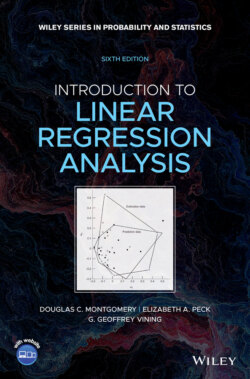Читать книгу Introduction to Linear Regression Analysis - Douglas C. Montgomery - Страница 31
2.3.1 Use of t Tests
ОглавлениеSuppose that we wish to test the hypothesis that the slope equals a constant, say β10. The appropriate hypotheses are
(2.23)
where we have specified a two-sided alternative. Since the errors εi are NID(0, σ2), the observations yi are NID(β0 + β1xi, σ2). Now is a linear combination of the observations, so is normally distributed with mean β1 and variance σ2/Sxx using the mean and variance of found in Section 2.2.2. Therefore, the statistic
is distributed N(0, 1) if the null hypothesis H0: β1 = β10 is true. If σ2 were known, we could use Z0 to test the hypotheses (2.23). Typically, σ2 is unknown. We have already seen that MSRes is an unbiased estimator of σ2. Appendix C.3 establishes that (n − 2)MSRes/σ2 follows a distribution and that MSRes and are independent. By the definition of a t statistic given in Section C.1,
(2.24)
follows a tn−2 distribution if the null hypothesis H0: β1 = β10 is true. The degrees of freedom associated with t0 are the number of degrees of freedom associated with MSRes. Thus, the ratio t0 is the test statistic used to test H0: β1 = β10. The test procedure computes t0 and compares the observed value of t0 from Eq. (2.24) with the upper α/2 percentage point of the tn−2 distribution (tα/2,n−2). This procedure rejects the null hypothesis if
(2.25)
Alternatively, a P-value approach could also be used for decision making.
The denominator of the test statistic, t0, in Eq. (2.24) is often called the estimated standard error, or more simply, the standard error of the slope. That is,
(2.26)
Therefore, we often see t0 written as
(2.27)
A similar procedure can be used to test hypotheses about the intercept. To test
(2.28)
we would use the test statistic
(2.29)
where is the standard error of the intercept. We reject the null hypothesis H0: β0 = β00 if |t0| > tα/2,n−2.
